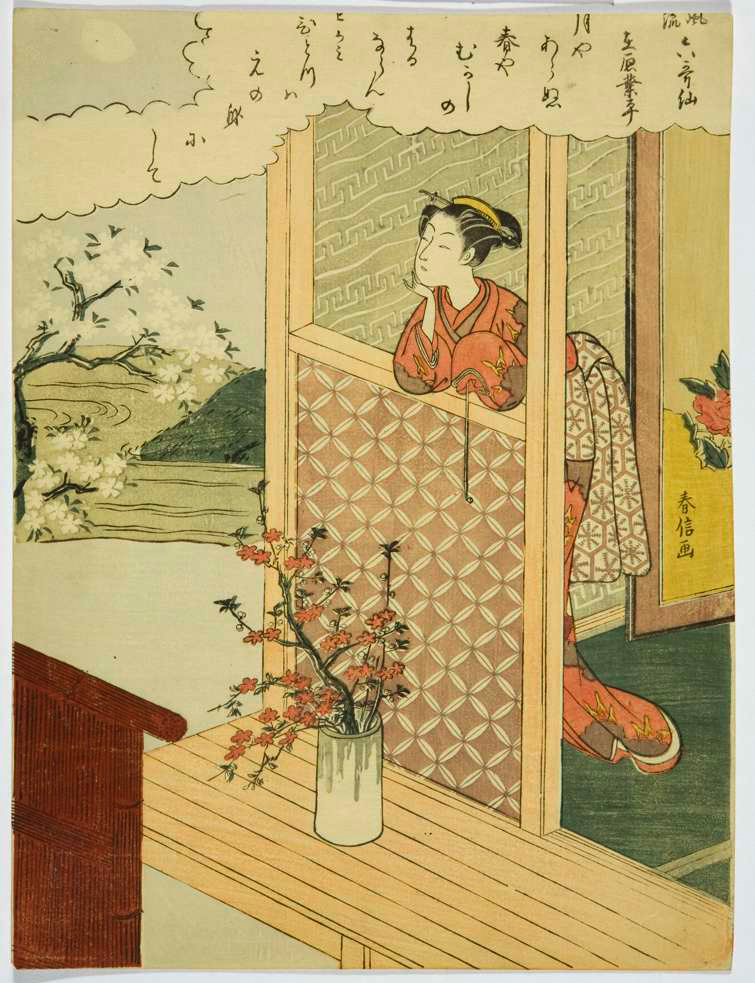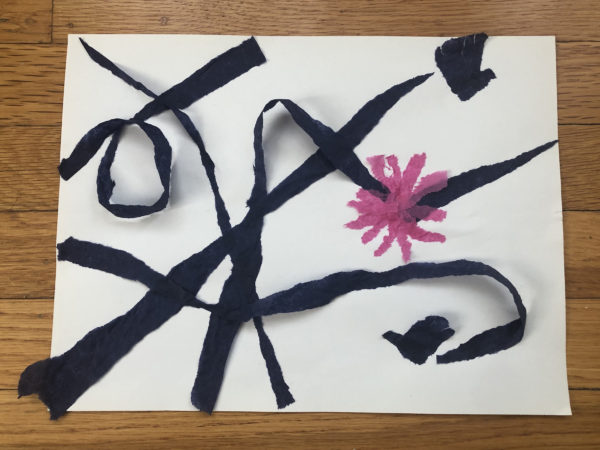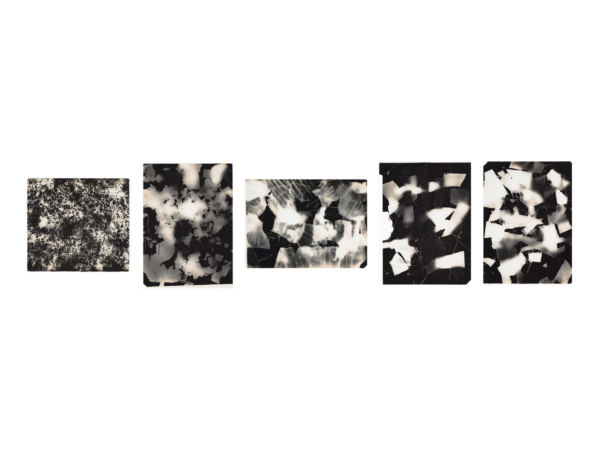Activity
Edo Period Society (1615–1868) in Japan

A young lady looking at the moon from a window (Ariwara no Narihira), from Six Fashionable Poets (Furyu rok’kasen).
Class System
After 150 year of civil war, the Shogunate in Japan was determined to enforce and maintain a stable society. The Shogunate further extended its control of the people through a class system with social and economic constraints. The highest class was composed of the samurai, followed by farmers, craftsmen, and at the lowest level, merchants. Nobility, Buddhist monks, Shinto priests, and social outcasts (beggars and prostitutes) were exempt from these classifications. This system reflected the social values placed on the different segments of society by the Shogunate and was based on the Japanese interpretation of Chinese Confucianism. The structure was purely hereditary, and the rules of conduct, privileges, and duties of each class were strictly enforced.
However, although this class system instituted by the Shogunate was meant to ensure social stability, one of the most interesting aspects of Edo culture is that individuals were constantly finding ways around the rules. Commoners, who included farmers, artisans, and merchants, were prohibited from lavish displays of wealth, but subverted sumptuary laws that restricted the decoration of residences, means of transportation, and dress. They did this by, for example, lining their simple kimono with luxurious silks, or by following building restrictions superficially so that from the exterior their home or shop appeared to be only one story when in fact it was two. Although lowest in status, many merchants achieved great wealth during this period. Naturally, they sought to enjoy their success by collecting beautiful objects and spending money on extravagant entertainment. Occasionally, the government cracked down on excess by issuing new edicts and enforcing them more rigorously. Even samurai, who were expected to maintain high standards of conduct, felt constrained—they visited the Kabuki theater and red-light districts in disguise.
Below are general descriptions of the four classes mentioned above:
Samurai
Japan was ruled by the Shogun (supreme military dictator), while the emperor remained a figurehead leader in Kyoto. Sworn to obey the shogun were daimyo (feudal lords deriving from the samurai), who in turn were supported by their samurai (retainers) of varying ranks.
To prevent the daimyo from becoming powerful enough to threaten civil war, Ieyasu enforced a system of alternate attendance (sankin kotei), which required the feudal lords to maintain three extravagant residences in Edo, as well as similar homes in their fiefs. Daimyo had to alternate every year between their provincial residence and their Edo homes. Wives and children, however, remained in Edo at all times, making them more or less hostages in the city should rebellion break out. Sankin kotei ensured that the daimyo remained under close supervision by the shogunate, and that their resources were constantly drained, making the cost of rebellion and the danger to their families too great. Income from their land was the daimyos’ only source of wealth (rice was the basis of the Japanese economy), which they squandered on lavish homes and elaborate processions to and from Edo. With such lavish living, the daimyo and samurai (who were dependent on the daimyo for their salaries) became increasingly poor. Many had to borrow money from merchants, who often exceeded them in wealth during the Edo period.
Ironically, despite their poor financial state, the samurai for the most part remained the most privileged class as the landed aristocracy. During this period of peace, samurai found themselves without the usual duties of war. Many made the transition from military to civilian leadership by taking positions in the government bureaucracy. As was expected, they regularly practiced artistic cultivation, such as the tea ceremony, ikebana (flower arrangement), calligraphy, and poetry. Others became scholars, artists, or musicians and were supported by their peers. However, less fortunate samurai, particularly those of a lower level, ended up without socially sanctioned employment. This was particularly true of the masterless samurai who lost their patronage when their daimyo dropped from favor and had his estate confiscated.
Farmers
Farmers were next in social rank, as the producers of rice that was the samurai’s source of wealth. They were the only citizens who had to pay taxes, which they paid for in rice. The samurai would raise taxes as much as they dared, achieving a kind of delicate balance, until some natural disaster led to famine, causing the farmers to riot. When conditions became unbearable, some of the peasants gave up their birthright as honorable farmers and joined the ranks of laborers, craftsmen, or merchants. Periodically, the shogunate would try to force them back onto the land with mixed success.
Although their lives could be hard, some enterprising farmers could purchase fields from their destitute neighbors. Some became quite rich, educated themselves and their children, and like wealthy merchants, at times commissioned art from well- known schools. The shogunate periodically issued edicts to control consumption among the farmers and other social classes, yet these attempts did not dissuade them from striving for a better life.
Craftsmen
Along with merchants, craftsmen maintained the economy of the city and profited handsomely. Together, the craftsmen and merchants supplied a demand that the military had for luxurious goods of all kinds (silk, embroidery, porcelain, lacquer, painting, sculpture, prints, etc.), deemed necessities in the lifestyles and ceremonies of the upper classes. These two classes were referred to collectively as chonin (literally “residents of the block” or townspeople).
Merchants
Because they did not produce anything of value for society, merchants were at the bottom of the social ladder. They nevertheless accumulated great wealth that surpassed even that of the samurai, and at times merchants acted as moneylenders to the upper classes. As Japan’s economy transformed from one based on agriculture to one of mercantilism, merchants gained the power and influence to become art patrons and cultural pacesetters . Some of the great family businesses in Japan today, such as Mitsui Corporation, were started in Edo.
Gradually, some merchants could afford luxuries and entertainment. Strict sumptuary laws, however, prevented them from open displays of wealth. At times, these repressive laws were contemptuously ignored. When it could not completely ban an activity, the shogunate sought to exercise control over it. This was how the Yoshiwara, the official and well-defined pleasure quarter in Edo, was created. With little freedom in how to spend their money as the aristocracy, merchants splurged on entertainment for the common people, such as Kabuki theater (an action-packed, burlesque form of theater), brothels, and wrestling tournaments.






